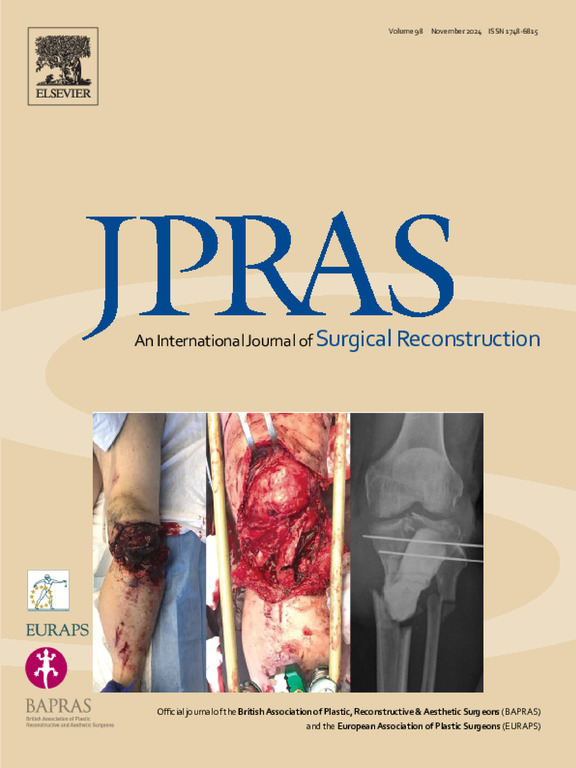Evaluation of the safety and efficacy of tranexamic acid use in face and neck lift surgery: A systematic review
IF 2
3区 医学
Q2 SURGERY
Journal of Plastic Reconstructive and Aesthetic Surgery
Pub Date : 2025-03-21
DOI:10.1016/j.bjps.2025.03.038
引用次数: 0
Abstract
Introduction
Tranexamic acid (TXA) has been used in various surgical settings to reduce bleeding and improve patient outcomes; however, its efficacy in face and neck lift is underexplored.
Methods
Following the PRISMA guidelines, this systematic review identified articles from 4 databases up to October 4, 2024, aiming to assess the efficacy of TXA in reducing the complications in patients undergoing face and/or neck lift.
Results
Ten articles were included. A total of 592 patients underwent either face or neck lift with TXA administration, among them 534 (90%) were women with a mean age of 62.0 years. TXA dosage ranged from 1 to 25 mg/mL topically and 1 g IV and was administered topically (4 studies), with local injection (5 studies), mixed with tumescence solution (3 studies), or intravenously (4 studies). Three studies showed evidence of reduced intraoperative blood loss with TXA. TXA reduced hematoma incidence in 4 of the 6 studies. Significant reductions in ecchymosis and shorter postoperative ecchymosis duration were reported. Skin flap complications were reported, but none were statistically significant (p > 0.05). TXA significantly reduced postoperative edema in 1 of 2 studies (p < 0.05). Procedure time was either unchanged or reduced. Drainage output and days before drain removal was reduced with TXA in 5 studies. There was no difference in the incidence of infection between groups.
Conclusion
TXA demonstrated promising results in facial surgery by reducing intraoperative bleeding and time, postoperative ecchymosis, edema, and drain output. Although TXA did not increase systemic complications, some wound-related complications were reported.
求助全文
约1分钟内获得全文
求助全文
来源期刊
CiteScore
3.10
自引率
11.10%
发文量
578
审稿时长
3.5 months
期刊介绍:
JPRAS An International Journal of Surgical Reconstruction is one of the world''s leading international journals, covering all the reconstructive and aesthetic aspects of plastic surgery.
The journal presents the latest surgical procedures with audit and outcome studies of new and established techniques in plastic surgery including: cleft lip and palate and other heads and neck surgery, hand surgery, lower limb trauma, burns, skin cancer, breast surgery and aesthetic surgery.

 求助内容:
求助内容: 应助结果提醒方式:
应助结果提醒方式:


